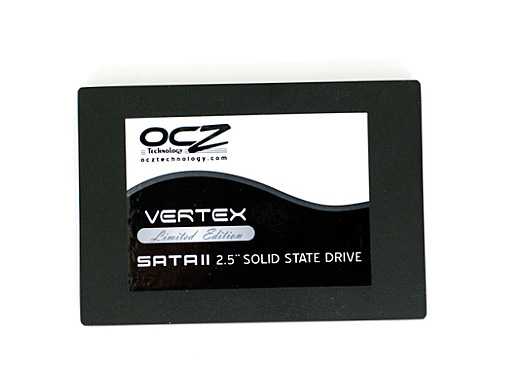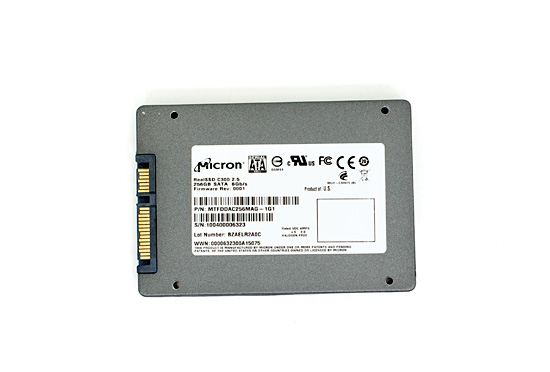OCZ’s Vertex Limited Edition Review & SSD State of the Union
by Anand Lal Shimpi on February 19, 2010 12:00 AM EST- Posted in
- Storage
Final Words
If you were one of the first customers to buy an X25-M G1 or G2, these new drives are fast but not fast enough to make you want to ditch your drive. At the same time, if you’re looking to make the jump to what I’ve often referred to as the single best upgrade you can purchase for your PC, these new drives don’t do anything to lower prices. At $399 the 100GB Vertex LE is no better of a deal than the existing Indilinx offerings. The $499 Crucla RealSSD C300 takes price in the wrong direction as well. If you were waiting for SSDs to get cheaper, you’ll have to wait even longer for the transition to 25nm MLC NAND flash in Q4.
That being said, there is value to be gained from today’s announcement. At $399 you are getting more SSD for your money than you will be able to get when the SF-1200 based Vertex 2 drives ship later this year. The only unknown is how much performance you’ll give up by going to a cheaper SF-1200 drive. I've heard that the maximum read/write speed of the SF-1200 will be similar to the SF-1500, but random performance is unknown at this time. Ultimately how much worse the SF-1200 performs will dictate how valuable the Vertex Limited Edition actually is.

Make no mistake - the Vertex Limited Edition is fast. Easily faster than the SSD posterchild Intel’s X25-M, across the board. It’s only in our heavy multitasking/downloading workload that the SandForce’s controller shows its soft spot. When tasked with a great deal of compressed writes, the SF-1500 controller performs no better than last year’s Indilinx Barefoot. At least with the Vertex LE you’re not paying a price premium for it.
The Vertex LE boasts sequential performance that easily hits the limits of 3Gbps SATA. Doing so with reads isn’t that hard, but with writes it’s harder to do. Granted anything you’re writing that’s large enough to transfer at speeds of 250MB/s for more than a couple of seconds is likely highly compressed to begin with and thus you won’t see those transfer speeds to begin with. Such is the great paradox of SandForce’s DuraWrite technology.
Unlike most drives that only offer good sequential performance, the Vertex LE doesn’t use it as a crutch. Random read and write performance is spectacular, regardless of OS or partition alignment. Under Windows 7, the Vertex LE can randomly write data in 4KB at 162.2MB/s. That’s faster than Intel’s X25-M G2 can write sequentially.
Then we have Crucial’s RealSSD C300, which you are paying a price premium for. Starting at $499 the C300 commands a higher price than any other SSD on the market with 128GB of MLC NAND flash. As a result you get the only 6Gbps compatible SSD on the market, and the performance to back it up.

At first glance it is the most Intel-like of any of the SSDs here. Its performance comes without any stipulations as to the type of writes you have to be doing, it just always delivers.
Sequential and random performance is stellar, although out of the box it doesn’t deliver the best performance under Windows XP. Pair it with a more modern OS that is 4K-aware and its performance easily rivals the SF-1500. Give it access to a 6Gbps SATA controller and it’ll deliver higher sequential read speeds than we’ve ever seen from an SSD.
The RealSSD C300’s random write performance under Windows 7 is slightly behind the Vertex LE, but its random read performance is much better.
Real world performance of the C300 is nothing to scoff at. It’s easily in the top 3 of all SSDs we’ve ever tested, and arguably the fastest MLC SSD on the market. Especially if you pair it with a 6Gbps SATA controller. The only thing that worries me about the C300 is its unusually high max write latency. Admittedly it pokes its head up very rarely and average write latency is second only to the Vertex LE, but OSes don’t always respond well to unexpectedly high write latencies. It’ll be something to keep an eye on as I get more time with the C300.
Our final newcomer is the Kingston SSDNow V+ Series drive. Priced at $399 it continues the trend of not driving prices lower, just offering alternatives. The 128GB drive I tested performed extremely well in some cases such as our heavy multitasking/downloading Bench workload. In others, the drive was much less impressive. The Toshiba controller doesn’t do well in random write performance, mimicking the Samsung RBB controller it often competes with in OEM machines. The fact that I wasn’t able to get TRIM working is also cause for concern. If Kingston could drop the price on the drive and get the TRIM support working it might be an interesting alternative to Samsung based drives.
Now we get to the hard part, recommendation time.
There’s this convergence of SSDs with 128GB of NAND at the $399 price point. Generally at or around $399 you can get something with 128GB of NAND. Controller offerings at this price point are Indilinx, Intel, Samsung and now SandForce.
Assuming the drive is totally reliable, and there’s no chance of any bugs creeping up that OCZ/SandForce missed, the Vertex LE would be the absolute best buy at $399. You’ll notice that my recommendation comes with a huge caveat. The last SF-1500 drive I had died after two weeks. Admittedly it was a beta, but this is also SandForce’s first drive shipping to consumers ever. I think it’s more than fair to be cautious.
If you’re willing to take the risk, the Vertex LE appears to be the best SSD you can buy at $399. It is a difficult proposition simply because we have had such limited experience with the drive and the controller/firmware have a completely unproven track record. It really boils down to how much of an early adopter you are. At least OCZ as a company tends to take care of its customers, so even if you do take the jump and something does go wrong you won’t be SOL. The Vertex LE will ship with a 3 year warranty and if your drive dies you'll get another LE (OCZ is putting some aside), Vertex 2 or other equivalent in its place.
OCZ’s CEO Ryan Petersen and I could always get into another yelling match if you aren’t taken care of.

If you're not willing to risk it, Intel or Indilinx are your best bets. Intel for best random performance, or Indilinx for better sequential write speed and cost.
Go up another $100 and the recommendation is easily the Crucial RealSSD C300. Again, assuming that nothing horrible ever happens with the drive. I do have more faith in Crucial’s validation testing given that Micron is shipping the same drive to OEMs, but it’s still a brand new, unproven platform. It is good to see Crucial/Micron actually embracing new technology instead of shying away from it. The combination of ONFI 2.0 NAND and 6Gbps SATA give the C300 an advantage that no other drive can match.
It's the price point that I'm really not comfortable with. When Intel launched the X25-M at nearly $600, it was fine because no other drive came close. With real world performance of the C300 virtually indistinguishable from the competition, it's difficult to justify that extra $100. Granted in more I/O bound cases, the C300 does have some extra value - I just question whether or not that's worth an extra $100.
While performance is surely improving, price is not. We'll have to wait until Q4 for that. The fact that Intel's roadmaps show the X25-E using 34nm MLC NAND means things are going to get very interesting for enterprise SSDs in 2011.










83 Comments
View All Comments
mindless1 - Friday, February 19, 2010 - link
I meant the above within the context of it using a PCIe, otherwise the SATA600 link would clearly be a bottleneck.mckirkus - Friday, February 19, 2010 - link
I know what you're saying. But I'm wondering what PCMark scores look like when you remove drive IO as the bottleneck. If the best SSDs are scoring 20,000 would the same system with no disk bottleneck score 25,000? 30?In other words, with only SSD scores we're still not sure how close we are to removing the drive bottleneck in system performance. IMO this is an important question and the answer would give these SSD scores some context.
overzealot - Monday, February 22, 2010 - link
I just tried out PCmark on a 2gb ramdrive. My q6600 (stock) had 1 core maxed from about 20% through each test, and got a score of 362,471 in the HDD test. That's with DDR800 folks.I'm guessing all the results would be CPU bound so my system is really not the best place to test it.
overzealot - Monday, February 22, 2010 - link
Physical Memory: 4 GB (2GB Ramdisk, so really 2)Graphics card: ATI Radeon HD 5770
Operating System: Windows 7 Ultimate (6.1.7600) 64-bit
Full suite results:
PCMark 6,566.0 PCMarks
Memories 5,596.0
TV and Movies 4,326.0
Gaming 5,133.0
Music 6,085.0
Communications 5,948.0
Productivity 6,242.0
HDD 345,794.0
The scores for everything would be way too long, here's the HDD results:
HDD - Windows Defender 1,797,924,224.0 B/s
HDD - gaming 2,064,242,048.0 B/s
HDD - importing pictures to Wind 1,810,203,648.0 B/s
HDD - Windows Vista startup 2,053,050,752.0 B/s
HDD - video editing using Window 1,549,093,504.0 B/s
HDD - Windows Media Center 1,607,108,864.0 B/s
HDD - adding music to Windows Me 1,423,892,096.0 B/s
HDD - application loading 1,355,910,784.0 B/s
HDtach rates it at 3GB/s.
jimhsu - Saturday, February 20, 2010 - link
There will also be an I/O bottleneck unless the entire dataset can fit directly onto the CPU. The RAM/CPU bottleneck is the Von Neumann bottleneck which is a well known one in computer science (time/space tradeoffs). It's just what's the point at which the bottleneck ceases to become a user issue...srue - Friday, February 19, 2010 - link
"Despite early messaging to press, the 40GB Kingston SSDNow V Series Boot Drive will never get official TRIM support for Kingston. Luckily some adventurous folks have figured out a way to trick Intel’s firmware updater into thinking Kingston’s drive is worthy of such a gift."That first sentence upsets me because I purchased the drive believing TRIM support would eventually come. Granted, I probably would have done the same knowing what I know now, but I thought I was getting a better value.
Does anyone have a link to the trick mentioned in the second sentence?
Glenn - Sunday, February 21, 2010 - link
Here ya go.http://www.overclock.net/ssd/656984-how-get-your-k...">http://www.overclock.net/ssd/656984-how...our-king...
I did this last week and it works great.
srue - Friday, February 19, 2010 - link
I found the instructions on overclock.net.mschira - Friday, February 19, 2010 - link
So I think I would rather go with an intel X25-MBy the way, what do you guys reckon are two X25-M 80Gb connected to the Intel Motherboard Raid in Raid 0 faster than a X25-M 160Gb?
Cheers
M.
leexgx - Saturday, February 20, 2010 - link
RAID 0 = no Trim support (maybe get TRIM support)160GB SSD would require no fussing to keep the drive tidy (with windows 7 that is standard drivers in AHCI mode) it stay at its advertised speeds as long as the Chipset driver was not installed or the intel matrix driver was Not installed
i give up for the most part commenting about how pointless RAID 0 with an SSD is, all you get is more data rate speed that you not even notice (unless your messing with Very big files 5-10GB but you lose TRIM so it degrade fast if you Write that much data a lot, One drive would still be faster) SSDs are about 2x data rate (a lot focus on this to much when its random you should be looking at ), 30x random data rate faster or more and the IOPS is 50x faster then an HDD (normally)
RAID + SSD = Fast for about an week or month then it be slower then 1 SSD